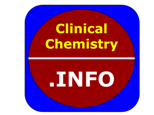Clin Chem Lab Med. 2025 May 30. doi: 10.1515/cclm-2025-0549. Online ahead of print.
ABSTRACT
Since several years, sports authorities, including national anti-doping organisations and the World Anti-Doping Agency (WADA) have published that the consumption of food supplements can be at risk for athletes due to potential contamination by prohibited substances. Despite these warnings, supplements are largely used by elite athletes and doping violations involving supplements are weekly reported in the media. Anabolic steroids, selective androgen receptor modulators (SARMs), metabolic modulators, stimulants and diuretics are among the most frequently detected substances in contaminated supplements. The author was involved in 2 cases where trimetazidine was identified as the source of the doping violation but the sport authorities sentenced both athletes. Case 1: trimetazidine in urine at 0.1 ng/mL; trimetazidine negative in 3 × 2 cm hair segments (LOQ at 1 ng/g [pg/mg]); trimetazidine at 4 ng/tablet in the supplement. Case 2: trimetazidine in urine at 0.1 and 1.6 ng/mL on 2 occasions; trimetazidine negative in 6 × 1 cm hair segments (LOQ at 1 ng/g [pg/mg]); trimetazidine at 7.2 μg/tablet in the supplement. Despite all pharmacological parameters were consistent with minute amounts of trimetazidine intake during a scenario of proven contamination, the presence of trimetazidine in the urine samples was recognized as an anti-doping rule violation and the athletes were sanctioned with a period of ineligibility of 6 months. From a forensic perspective, contamination is not doping. To avoid these conflicting issues with contaminations, the debate should move to the interest of using hair test results and the need of implementing a threshold for reporting the presence of a drug in urine at very low concentration.
PMID:40459119 | DOI:10.1515/cclm-2025-0549
